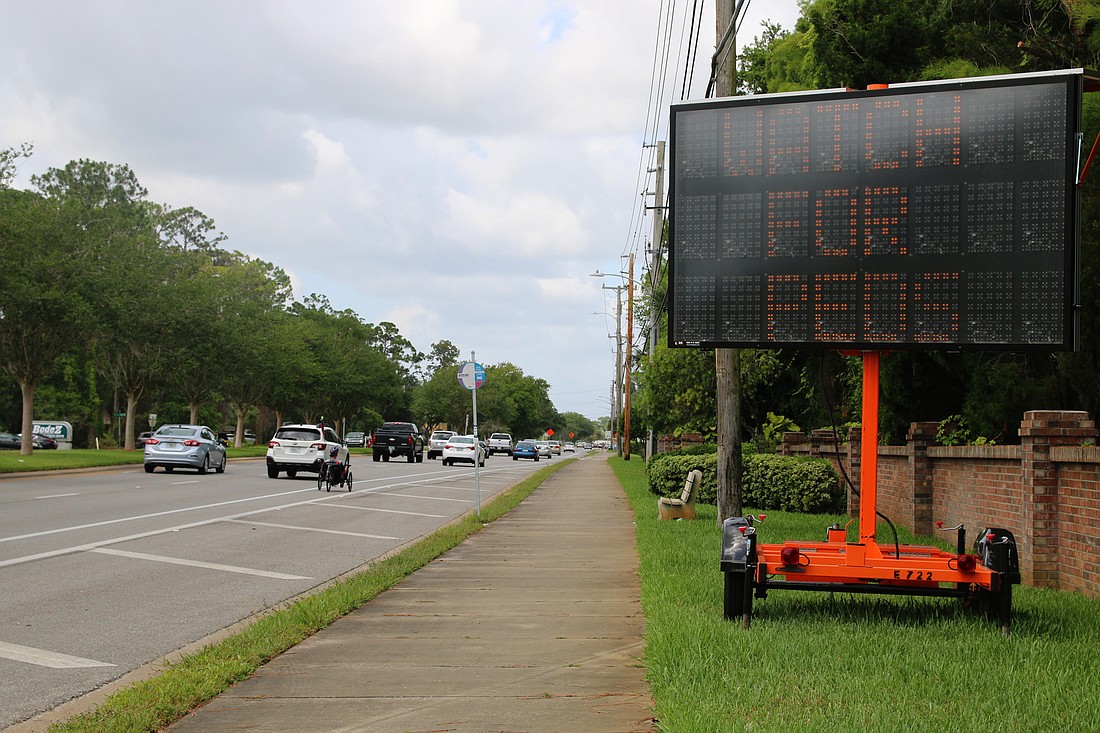- April 26, 2024
-
-
Loading

Loading

Speed tables. Raised crosswalks. Mini-roundabouts.
All three traffic calming measures Ormond Beach could see in the future as city staff work to put together a program to address issues on local roads. The City Commission participated in a workshop on the topic on Tuesday, Dec. 3, where City Engineer Shawn Finley laid out the framework of how a traffic calming program could operate, including submittal processes, plan preparation and the devices the city will allow.
Finley presented the commission with a three-year project timeline, in which construction or implementation of a traffic calming measure would occur in year two. The city would evaluate the device's success in the third year.
With seven pedestrian fatalities this year in Ormond Beach, a couple commissioners felt that, while the program is needed, the timeline is too stretched out.
City Commissioner Rob Littleton pointed out that placing the electronic signs on the intersection at West Granada Boulevard and Clyde Morris Boulevard, and for the new Wawa traffic light near 600 West Granada Boulevard, only took a few days to put in place.
"I don't think that there's anyone that I work with that likes to tell people no.This is a chance for us to not arbitrarily say no. It gives us a chance to help us to say yes."
Shawn Finley, city engineer
"For small things, I don't want to create such a bureaucratic mess that nothing gets done and we're less responsive," Littleton said.
Mayor Bill Partington agreed. He said he didn't want the process to take too long in case more issues arise while residents wait for a traffic calming device and added that he would like to look at the ability to expedite the process for streets that rank high in the request criteria.
"In today's world, like it or not, we're seeing faster drivers and more aggressive drivers," Partington said.
Finley outlined the steps residents will need to take should they want to ask for a traffic calming device for their neighborhood or street.
Residents will need to request a "Traffic Calming Request" form from the city's engineering division, where they will detail their concerns, what time they occur and specific locations. However, residents will need support from 65% of their neighborhood for the request to go forward.
Finley defined a neighborhood as a "central unit that operates together." He expects the city will see requests come in from one single road, or parallel roads. That's something that the city should define later, he added.
City Commissioner Troy Kent said the city should be careful about what constitutes a neighborhood in this process.
"One street could be grossly affected, and the next street really has very little effect because of how things are set up," Kent said, citing the example of the residential roads on U.S. 1.
Highland Avenue and Dix Avenue have had issues with fast-speed cut-through traffic.
Kent said he's had residents call in the past asking for speed bumps, and that the answer received was that the city "doesn't do speed bumps." Because of this, he's glad the city is "evolving" it's traffic calming measures.
City Manager Joyce Shanahan said they are aware Highland and Dix are a problem, and that they will reach out to those neighbors specifically.
"I don't think that there's anyone that I work with that likes to tell people no," Finley said. "This is a chance for us to not arbitrarily say no. It gives us a chance to help us to say yes."
After requests are filed, the city will collect site data and give the project a priority ranking based on traffic speed, crashes, traffic volume, number of schools within 2 miles, and existing sidewalks or bike lanes. Then, a feasibility study and concept plans will be drafted, followed by a neighborhood meeting.
Plans will be prepared, and the project will be evaluated by the City Commission for possible inclusion in the following year's Capital Improvement Budget.
The list of allowable devices for traffic calming were presented to the commission as the following:
The costs for these range between $2 per linear foot for more lane striping; $3,000 for a speed table; between $3,000 to $15,000 for raised crosswalks; and $25,000 to $200,000 for a a mini-roundabout.
“Overall, I’m encouraged," Partington said. "I think it’s a good process.”